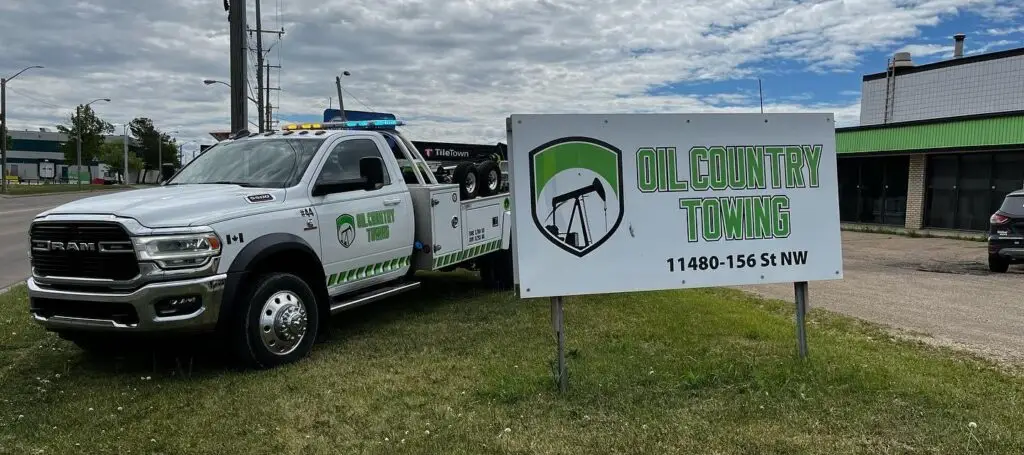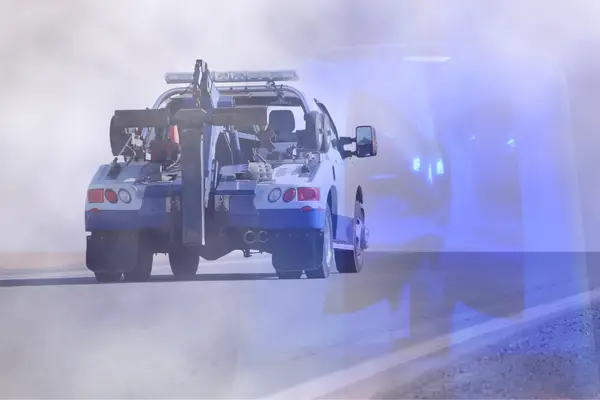What led up to the blue light pilot program in Alberta, and how did the towing and recovery industry respond?
As of June 30, 2022, Alberta tow trucks have been allowed to use both blue and amber flashing lights to enhance roadside visibility. According to Don Getschel, owner/operator of Oil Country Towing and president of the Towing and Recovery Association of Alberta (TRAA), his association and the Alberta Motor Association (AMA) have been putting pressure on the government to pass this new legislation for years. And mostly recently, they encouraged their members and service providers to contact their local MLAs.
A turning point in negotiations happened earlier this year because of an accident involving one of Oil Country Towing’s trucks. Getschel sent an email to Alberta’s MLAs and the Ministry of Transportation with pictures of the incident scene to demonstrate the seriousness of the safety issues. He received a response almost immediately from Brad Rutherfold, MLA for Leduc-Beaumont, and a former police officer.
It was Rutherfold who introduced the idea of equipping tow trucks with blue flashing lights in a Private Member’s Bill (Bill 207, the Traffic Safety (Tow Truck Warning Lamps) Amendment Act) on April 28, 2022. The Bill was accepted with little resistance, according to Getschel. The Alberta Association of Chiefs of Police has also been in favour the bill, and the law enforcement community has expressed no significant objections.
Following acceptance of the Bill, the government announcement the launch of the blue light pilot project. “At first, it was a scramble [for the industry] because we didn’t know what to do. The government didn’t give us any direction,” said Getschel. “There was no communication until we initiated it.” A lack of communication then led to some major challenges with project implementation.
In its initial exemption letter, the Registrar of Motor Vehicle Services of Alberta Transportation allowed tow trucks the use the combination of blue and amber lights only if the lamps were mounted on the vehicle’s roof. However, this requirement met with resistance from the industry. “Ninety-five percent of tow trucks don’t have their lights on their roof. They are on a light pylon, so this became very challenging, as no one was actually in compliance with the program,” said Getschel.
In one instance, a TRAA member even received a warning from the Commercial Vehicle Safety Alliance (CVSA) for violating the Act, as their blue lights were not installed on a roof.
On behalf of the TRAA, Getschel expressed this concern to the government and asked for a revision to the exemption letter so that the existing light installment on the majority of tow trucks in the province was in compliance with the new regulation. He also brought up the issue with CTV News, and the media attention helped prompt a response from the government soon after the story aired.
“The Justice minister reached out to that company and apologized for that incident,” said Getschel. On July 20, following the TRAA’s activism, the Registrar of Motor Vehicle Services of Alberta Transportation revised its rules and removed the requirement that blue lights must be installed on a tow truck’s roof.
“It is really nice to see that the dialogue with the industry has started,” said Getschel. “What has happened in the last couple of months outlines the importance of an association. Because we are all united in our association, as president I was able to speak to the government on behalf of the industry—not only from the tower’s perspective, but also from the supplier’s perspective.”
The addition of blue lights to trucks is not a panacea, however. Getschel would like to see more efforts to educate the public and increased enforcement. “The feedback I am getting from my operators and other association members is very positive. They have noticed the slow down [by motorists], more awareness of them, and compliance,” he said.
Tow operators who use blue lights on their trucks are currently required to carry the revised exemption letter in their trucks while the government works on a permit-based system.
Throughout the pilot project, the TRAA will collect data on the number of roadside incidents involving tow truck operators and share the statistics with the AMA and the Alberta government. Getschel hopes that if the pilot project in Alberta becomes permanent, other provinces will follow, unifying lighting standards across the country.

